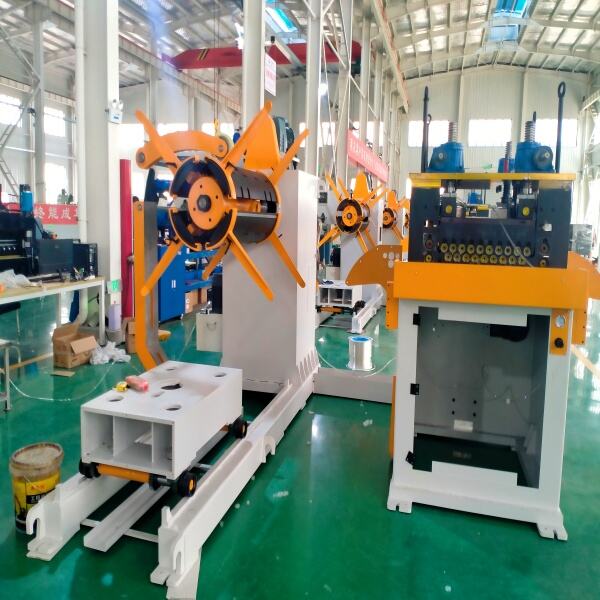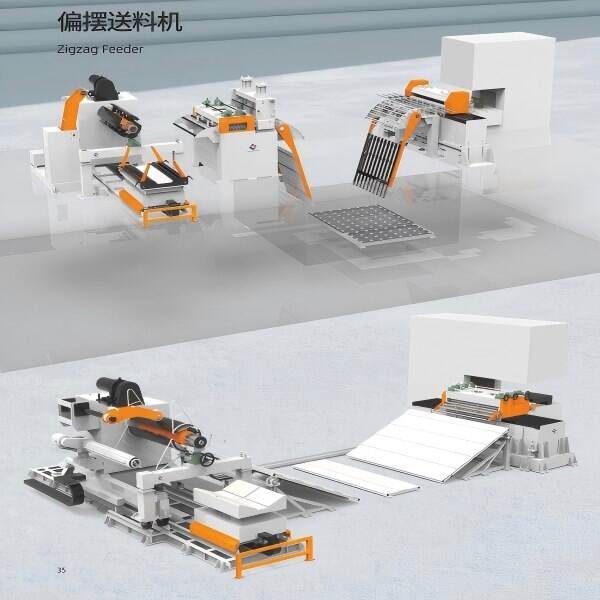Revolutionizing Production Efficiency with Advanced Feeding Technology
In today's fast-paced manufacturing environment, efficiency and productivity are paramount to success. The three-in-one feeding machine has emerged as a game-changing solution for high-volume production lines, offering unprecedented versatility and streamlined operations. This innovative equipment combines multiple feeding functions into a single unified system, dramatically reducing floor space requirements while maximizing output potential.
Manufacturing facilities worldwide are discovering how these sophisticated feeding systems can transform their operations, leading to significant cost savings and improved production metrics. By integrating three essential feeding processes into one cohesive unit, companies can achieve remarkable improvements in their production efficiency while maintaining consistent quality standards.
Core Components and Functionality
Integration of Multiple Feeding Mechanisms
The three-in-one feeding machine masterfully combines vibrating, screw, and belt feeding mechanisms into a single comprehensive unit. This integration allows for precise material handling across various product types and consistencies. The vibrating component ensures even distribution of materials, while the screw mechanism provides accurate dosing control, and the belt system enables smooth transfer throughout the production process.
Each component works in perfect harmony, creating a seamless flow that eliminates the need for multiple standalone machines. This sophisticated synchronization results in fewer transfer points, reducing the risk of material loss and contamination while maintaining optimal feed rates.
Advanced Control Systems
Modern three-in-one feeding machines feature state-of-the-art control systems that enable precise adjustment of feeding parameters. Operators can fine-tune settings for each component independently, ensuring optimal performance across different material types and production requirements. The intelligent control interface provides real-time monitoring and adjustment capabilities, allowing for quick responses to changing production demands.
These advanced controls also incorporate safety features and automatic shut-off mechanisms, protecting both equipment and operators while maintaining consistent product quality. The ability to store and recall multiple feeding profiles further enhances operational flexibility and efficiency.
Operational Benefits and Advantages
Space Optimization and Cost Efficiency
One of the most significant advantages of implementing a three-in-one feeding machine is the dramatic reduction in required floor space. By consolidating three separate feeding functions into a single unit, manufacturers can optimize their facility layout and free up valuable production area for other essential operations. This space efficiency translates directly into cost savings, as companies can maximize their existing facility footprint without expensive expansions.
The consolidated design also results in lower maintenance costs and reduced energy consumption compared to operating three separate machines. With fewer moving parts and a simplified maintenance schedule, companies can achieve substantial savings in both operational and maintenance expenses.
Enhanced Production Throughput
The seamless integration of feeding mechanisms in a three-in-one feeding machine significantly improves production throughput. The elimination of transfer points between separate machines reduces material handling time and minimizes the risk of bottlenecks. This streamlined flow allows for higher processing speeds while maintaining precise control over material feed rates.
Production lines equipped with three-in-one feeding machines often report increased output rates of up to 30% compared to traditional setups. This improvement stems from reduced downtime, faster material transfer, and more efficient overall operation.
Implementation and Integration Considerations
System Compatibility Assessment
Before implementing a three-in-one feeding machine, manufacturers must carefully evaluate their existing production line configuration. Consideration should be given to upstream and downstream processes to ensure seamless integration. This assessment includes analyzing material flow patterns, production requirements, and space constraints to determine the optimal placement and configuration of the feeding system.
Working closely with equipment suppliers during the planning phase helps identify potential challenges and develop appropriate solutions before installation. This proactive approach minimizes disruption to existing operations and ensures a smooth transition to the new feeding system.
Training and Operational Requirements
Success with a three-in-one feeding machine depends heavily on proper operator training and understanding of the system's capabilities. Comprehensive training programs should cover basic operation, maintenance procedures, and troubleshooting techniques. Operators must become proficient in adjusting feeding parameters and responding to various production scenarios.
Regular maintenance schedules and clear operating procedures should be established to maintain optimal performance and extend equipment life. This includes implementing preventive maintenance routines and keeping detailed records of system performance and adjustments.

Future Trends and Developments
Integration with Industry 4.0
The evolution of three-in-one feeding machines continues with the integration of Industry 4.0 technologies. Advanced sensors and IoT connectivity enable real-time monitoring and data collection, providing valuable insights into system performance and maintenance needs. This data-driven approach allows for predictive maintenance and optimization of feeding parameters based on historical performance analysis.
Machine learning algorithms are being incorporated to automatically adjust feeding parameters based on changing production conditions, further improving efficiency and reducing operator intervention. These technological advancements represent the next frontier in feeding machine capabilities.
Sustainability and Energy Efficiency
Manufacturers are increasingly focusing on the environmental impact of their operations, and three-in-one feeding machines are evolving to meet these concerns. New designs incorporate energy-efficient motors and improved material handling systems that reduce waste and energy consumption. These improvements not only benefit the environment but also contribute to lower operating costs.
Future developments are expected to include even more sustainable features, such as regenerative energy systems and biodegradable component options, further reducing the environmental footprint of high-volume production lines.
Frequently Asked Questions
What maintenance schedule is recommended for a three-in-one feeding machine?
Regular maintenance should be performed daily, weekly, and monthly, depending on the component. Daily inspections of feeding mechanisms, weekly cleaning of control systems, and monthly calibration checks are typically recommended. A comprehensive maintenance schedule should be developed based on specific operating conditions and manufacturer guidelines.
How does a three-in-one feeding machine handle different material types?
The machine's versatility allows it to handle various materials through adjustable settings for each feeding mechanism. Operators can modify vibration intensity, screw speed, and belt velocity to accommodate different material properties and ensure optimal flow rates. The control system stores multiple material profiles for quick changeover between products.
What is the typical return on investment period for a three-in-one feeding machine?
Most manufacturers report ROI periods of 12-24 months, depending on production volume and efficiency gains. The combination of reduced labor costs, improved throughput, lower maintenance expenses, and space savings contributes to rapid cost recovery. Some facilities achieve faster ROI through increased production capacity and reduced waste.

